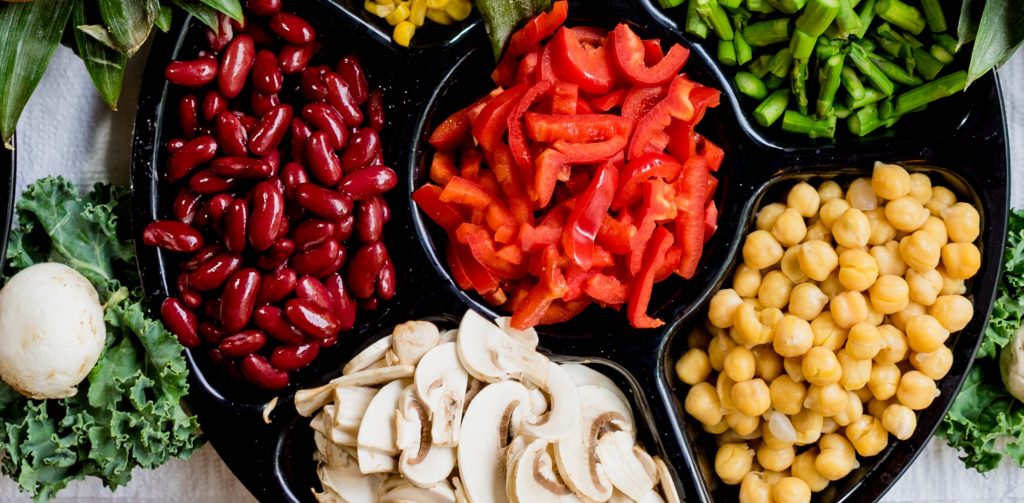How To Stock Your Personal “Food Pharmacy”
Photo Credit: Dan Gold, via Unsplash.com
“Let food be thy medicine, and medicine be thy food.” This famous statement from Hippocrates dates back to 431 B.C. It’s 2017, however, that may be the banner year for the idea. Hospitals and clinics from Pennsylvania to Hawaii are bringing real food to the concept of the pharmacy.
“Food pharmacies” are positioning kale and berries as cures for what ails you
Instead of dispensing the usual FDA-approved tablets, “food pharmacies” are positioning kale and berries as cures for what ails you. Unlike traditional pharmacies, real brick-and-mortar food pharmacies are on-site pantries created in partnership with hospitals and health clinics (see article from the Peninsula Press). Their goal is to treat diseases at earlier stages by offering better access to healthy foods and teaching patients how to prepare and use those foods. One program started by Geisinger Health System, saw their patients’ hemoglobin A1c levels, a test that measures blood sugar levels, drop by an average of two percent.
These leading-edge programs have a lot in common with Ornish Lifestyle Medicine. A key part of the program includes training chefs in hospital kitchens. In fact, Central Pennsylvania’s Geisinger, one of the first hospitals to partner with a food pharmacy, will be one of many clinical sites across the country that offers the Ornish Lifestyle Medicine program.
In previous Ornish Living articles, we’ve offered strategies to get started using food as medicine. This includes advice on how to stock your freezer, improve your pantry, and spice up your culinary toolbox with a variety of spices. All these steps will help to reduce inflammation, boost your immunity, improve your brain power and digestion, decrease nausea, and help to stabilize your blood pressure.
Here are six power-packed foods to feature in your very own personal “food pharmacy.”
Garbanzo Beans
Beans: How can you choose just one? All beans are packed with many phytonutrients, but some beans shine brighter for the diverse ways you can use them. For example, garbanzo beans (or chickpeas):
- They can be tossed in the food processor with some lemon juice and spices to makes a delicious hummus. It can be a delicious creamy, protein-rich base for a pizza, a sandwich filling or savory dip.
- Or toss a handful of these fiber- and protein-rich beans into a salad, stir-fry, or veggie stew.
- Try roasting them for a crunchy snack — great for on the go and traveling.
A recent study published in the Journal of American Dietetic Association showed the cholesterol-reducing benefits of adding garbanzo beans over 12 weeks. Beans are high in fiber, magnesium, folate, antioxidants and phytonutrients such as anthocyanins — all which actively promote health and prevent disease. The cholesterol-reducing soluble fiber in beans can actively reduce LDL (bad cholesterol), help to regulate blood sugars, and keep you feeling full and satisfied.
Berries
Berries offer plenty of complexity for the palate, and a dash of beauty to a bowl of cereal. They have exceptionally high ANDI (Adequate Nutrition Density Index) scores, which ranks them as the most concentrated suppliers of nutrients. They are packed with antioxidants that give them a remarkable ability to protect against the ravages of time and disease.
Quinoa
This nutty-flavored, nutrient dense grain has re-invented the lunch salad. Known as an ancient “mother grain,” quinoa provides complete protein with all the essential amino acids. It’s high in lysine, which makes the protein more bioavailable. It is also extremely nutrient-rich, with energy-boosting B vitamins, and is higher in iron than any other grain.
Kale
This crunchy, roast-able, richly green leaf is one of the healthiest, nutrient-dense foods to include in your food pharmacy. Kale is a member of the cancer-protective cabbage family (Brassica oleracea). It’s related to cruciferous powerhouses such as cabbage, broccoli, cauliflower and Brussels sprouts.
At just 30 calories per cup:
- Kales is loaded with phytonutrients and antioxidants.
- Has two grams of fiber.
- Three grams of protein, which is more than a day’s worth of Vitamin C.
- Provides twice the RDA for Vitamin A.
Mushrooms
Traditional Chinese medicine has always incorporated mushrooms. Western medicine is just catching up, recognizing the therapeutic uses and the impressive impact mushrooms have on health, especially with cancer prevention and treatment. Plus: Enjoy the pungent, umami-flavored bonus in your dishes.
Enjoy a variety of these medicinal wonders in this hearty Ornish Kitchen Mushroom Stroganoff. (See Sample Menu 2)
Onions
Onions are a staple in a heart-healthy, plant-based kitchen. The Allium family of onions, leeks, shallots, garlic and chives are among the most extensively studied foods that protect against cancer. They contain sulfur and anti-inflammatory compounds that help eliminate toxins. They also improve any stir-fry, salad, or sauce.
Peppers
Bright and bold peppers are a powerful food for your culinary kitchen. They are packed with protective antioxidants and phytonutrients, Vitamins A, C, E and many B vitamins. The same ingredient, capsaicin, that gives the fiery kick and causes pain to your tissues is the same one that protects us from cancer, reduces inflammation, and triggers the release of endorphins, a powerful brain chemical. The hotter the pepper the more capsaicin boost you will get!
How will you build your own food pharmacy today?






